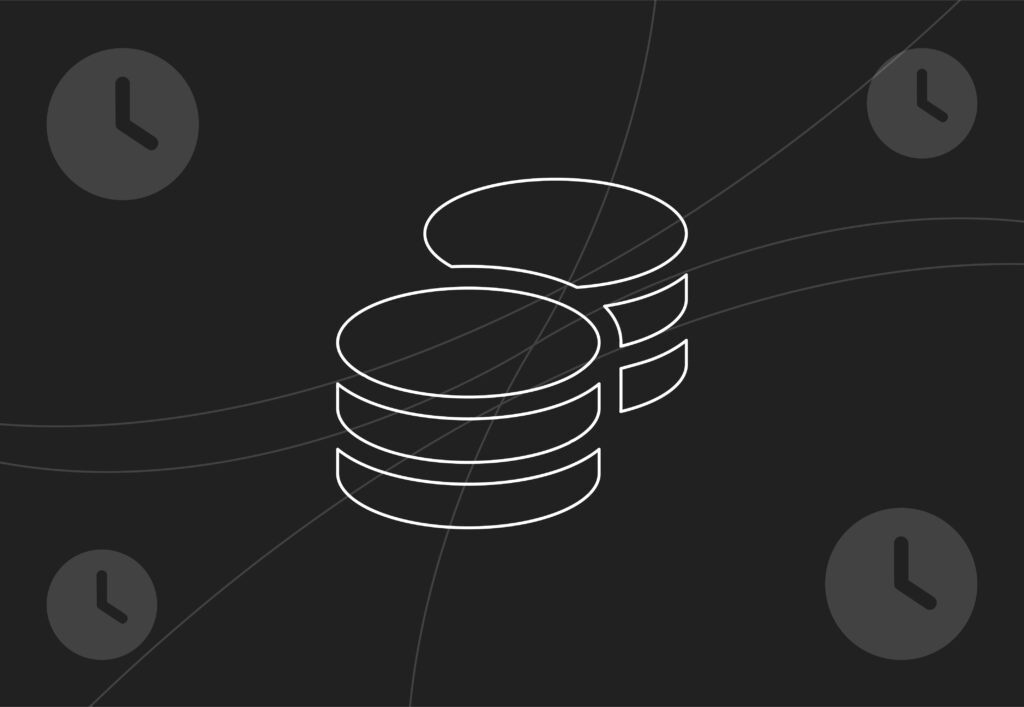
Predictive marketing: Anticipating customer needs

What if you could accurately predict the actions of a customer, or a potential customer, before they even know what they want themselves? Predictive marketing is enabling exactly this, and it’s a critical tool in a serious marketer’s arsenal, regardless of the advertising channel or industry. By leveraging data analytics, machine learning, and AI, it’s becoming increasingly viable to anticipate a customer’s needs ahead of time. This allows marketers and businesses to stay one step ahead of the game and proactively address those needs rather than deal with them reactively. In a market which is only becoming more competitive and harder to compete in, using predictive marketing could be what makes your business stand out in the crowd.
What is predictive marketing?
Predictive marketing is a data-driven marketing approach that utilises machine learning, AI, and advanced analytics to predict your customers’ needs and behaviours. When you combine historical data with real-time analytics, predictive models work to identify patterns in behaviour, and from that, predict what is likely to happen next. With that data, you can provide customers with personalised experiences that have already anticipated those needs.
You can take raw data and turn it into actionable insights about what the future could be. Predictive marketing, if you put it on a Venn diagram, would sit at the intersection of strategy, historical data, statistical models, audience insights, and general intuition. But it can pull from each of those areas as needed. It’s no longer necessary to lean on just guesswork because statistical models are advancing so quickly, combined with AI, that they’re becoming more and more accurate as time goes on.
The proactive approach of predictive marketing will enable you to plan and execute marketing campaigns across multiple channels, ultimately resulting in a much higher rate of success. You can save budget, become more efficient in your efforts, and get a better return on the investment.

How predictive marketing works
You need four key elements to successfully implement predictive marketing. It’s the combination of these elements that will allow you to see success. These are Data Collection & Preparation, Modelling & Pattern Analysis, Prediction Generation, and Actionable Insights. Let’s break each of these down.
Data collection and preparation
The foundation of any predictive marketing is the data you are already collecting; however, that data needs to be accurate. You’ll be collecting data from a variety of sources and these could include:
- Website analytics
- Transactions
- CRM software
- Mobile app analytics
- Social media platforms
- Ad platforms
Ideally, you would have this data feeding into a system acting as either a CDP (customer data platform) or a centralised data repository such as BigQuery. The data should also be cleansed to ensure accuracy and the removal of inconsistencies. Having data in a single place will make it easier for analysis and reporting of entire customer journeys.
Modelling and pattern analysis
Identifying patterns in your data is crucial to making sure that the model you’re feeding is going to accurately reflect that historical data. Using advanced algorithms, you can speed this process up, but we would always recommend hiring an experienced data scientist/analyst to complete this work. They will be experienced in dealing with large datasets from multiple data sources and working to combine and prepare them for analysis.
Once you have identified the patterns and prepped the data model, you can move on to working with the data with machine learning and/or AI. This is where you are going to train the models to work with classifications, regressions, clustering etc, and train the model to forecast future events by having it learn from the patterns in your historical data. A common comparison to this process is how we understand weather. Past data is trained to predict the weather forecast for the coming weeks.
Generating predictions
You’ve got your data, you’ve analysed the patterns and trained your models to predict the future through historical events, next up is generating the predictions to form your action plan. The predictive models will likely work with a ‘probability score’, and you would be best to work with a few different outcomes:
- Likelihood of a visitor either converting or churning without a purchase/lead.
- When is that likely to happen?
What will they do, and when will they do it? Using the historical data and the models, you can try and work out both. Then, from that, you have the final step, your actionable insights.
Actionable insights
Once you’ve generated your predictions and insights, it’s time to do something with them. What you have now is an understanding of what your audience might do next and when they might do it. With this insight, you can create/amend campaigns to support bringing them back and converting.
For example, an audience that is likely to churn could benefit from a remarketing campaign to entice them back. You could personalise this by offering them a discount or another incentive to come back.
Or perhaps the audience that is likely to convert, you could push a personalised campaign showcasing the benefits of your service/product to bring them back and convert earlier. Or perhaps you have an enhanced version of your product or service that they would benefit from?
—
It’s also important to understand that this process isn’t static; the algorithms/machine learning/AI can continue to learn and improve the modelling to improve results. The more you put in, the better you get out.
The key benefits of predictive marketing
Excelling at predictive marketing opens up many benefits for businesses and marketers. These include:
Proactive customer engagement
You can flip your marketing campaigns from reactive to proactive and address customer needs before it’s clear to them what they might be. Proactive engagement is a great way to exceed customer expectations and help build a strong relationship with your customers.
Ad & campaign personalisation at scale
With an insight to a customer’s next potential move, you can tailor marketing messaging by creating bespoke creatives that are highly specific to that audience segment. The more relevant the campaign, the more receptive your audience will be to interacting with it and converting.
Improved allocation of resources
With improved knowledge of the probability of different outcomes from different audience segments, you can focus your resources and budgets in the right areas to bring in the best return on your investment. Spend less on audiences that are unlikely to ever convert, and more on audiences that you know are likely will.
Higher customer retention rates
Your ability to better predict customer churn rates and timescales, you can take steps to prevent this from happening before the issues that cause them to churn even arise. Lower churn rates will also increase customer loyalty and that can have a drastic impact on the revenue coming into your business.
Competitive advantages
Predictive marketing just isn’t utilised enough, and by doing it, it’ll help you stay one step ahead of your competitors, or the competitors of your clients. You have an opportunity to get in front of more captive audiences at the exact right time to bring them in and convert them.

Future trends in predictive marketing
Predictive marketing is an exciting area to be working in because advances in Machine Learning & AI continue to push the boundaries of what is possible at a rapid speed. In the coming years, we expect predictive marketing to become more widely adopted, more innovative, and easier to implement. We’ve put together a few things we believe will impact the industry in the near future.
AI-powered enhancements
You will be well aware of the advances being made in AI at the moment, and this is only set to continue. You can expect predictive models to become more accurate, more nuanced, and we’ll likely see more use of neural networks (deep learning) to advance predictive marketing even further by speeding up the time it takes to uncover commonalities and patterns in user behaviour. This would open the door to even more granular recommendations and campaign targeting at an almost micro-level of audience segments.
Real-time analytics
As marketers, we spend a lot of time looking at what happened in the past, but the future of analytics will very much be real-time and looking into the future. Forecasting, as we know it, will change and become considerably easier to do and have higher accuracy. Real-time analytics will also allow for a broader personalisation of websites to show better related products, services, and content, all based on your current browsing. The mix of data, prediction and action will become even more important as it blends together.
Prescriptive analytics
The advances in predictive analytics will eventually lead to more prescriptive analytics. Imagine an opportunity to provide actionable insights at a real-time level directly on the platform. If, for example, you have an audience that is predicted to churn at a higher rate, you could have the actionable insight right there and then and know exactly what options you have to decrease that likelihood.
Broader adoption across different industries and business sizes
Currently, larger businesses or those working with digital agencies have more of an opportunity to work with predictive analytics because of fewer budget constraints and time resource issues. As the technology advances and becomes more widely available, we expect it to be adopted right up to the point where it takes over traditional analytics as we know it now. It’ll become easier to implement, less time-intensive, and easier to understand where perhaps it’s not the end user’s area of expertise.
Personalisation and privacy
Regulations on user data and privacy continue to move forward, especially in the EEA and UK. This means finding the balance between personalisation and privacy, which isn’t the easiest thing to achieve. What machine learning and AI will help achieve is a better understanding of data at a more aggregated level, unless you have first-party data available for use. GA4, for example,e looks to fill gaps caused by cookie rejection and ad-blockers by modelling data and displaying that in the platform. This will become more accurate. There’s also potential for user data to stay device-side and platforms to integrate with it that way, meaning the end user always has ultimate control over what can access it and when.
Closer connections between humans and AI
Ultimately, all of these advancements in predictive analytics, machine learning, and AI, they’re only as good as the human at the end of the chain that is able to interpret the data, implement actions, and understand the return on them. There’s a strong argument that all marketers need to look at focusing on data and strategy as a priority moving forward.
Conclusion
As we move forward as marketers, we’ll have more opportunities to get in front of customers at the exact time they need us to be there, and that will help improve campaign returns. But many businesses will need to invest in their data collection, data organisation, and internal/agency data teams before the full benefits of this will become apparent.
Businesses that leverage predictive analytics/marketing will see better ROI on campaigns, better customer retention, and an increase in the lifetime value of customers who do convert, because opportunities to market across the spectrum of a customer lifetime will increase.
Predictive models are going to help your business stay ahead of the curve, they will offer foresight, and not leave businesses wondering what could have happened in hindsight, and that’s a unique spot to be in. Proactively engaging with your customers based on what they are likely to need next is the future of digital marketing. It’s time to get ahead of the competition and understand how this can work for your business or your clients, and provide better, more impactful results than ever before.
If you need help with your data collection, whether through Analytics or CRM, BigQuery connections, data organisation or cleaning, our expert team of data analysts are on hand to help get you in the right direction to move forward.



